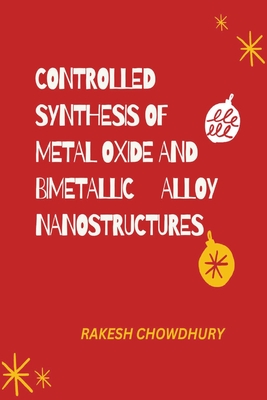
Controlled Synthesis of Metal Oxide and Bimetallic Alloy Nanostructures
Description
Bimetallic alloy particles are small particles that are made from two different metals or alloys that have been bonded together. These particles can have various shapes, such as spherical or cubical, and can be as small as a few nanometers or as large as several micrometers in size. Bimetallic alloy particles are often used in a variety of applications because they have unique properties that are not found in single-metal particles. For example, bimetallic alloy particles may have improved corrosion resistance, improved wear resistance, or enhanced electrical or thermal conductivity compared to single-metal particles. They can be used in a wide range of industries, including automotive, aerospace, electronics, and energy.
Controlled synthesis refers to the process of intentionally creating a specific material or chemical compound using precise techniques and conditions. This can be done through a variety of methods, including chemical synthesis, physical synthesis, and biological synthesis. In controlled synthesis, the starting materials, reactants, and reaction conditions are carefully selected and controlled in order to produce a specific product with specific properties. The goal of controlled synthesis is to obtain a high yield of the desired product, with a minimal amount of impurities or byproducts. This process is often used in the production of materials for various applications, such as in electronics, energy storage, and medicine. It is also used in research to synthesize new materials or to study the properties of existing materials.
Nanoscience and nanotechnology are that multidisciplinary as well as an
interdisciplinary area of modern science and technology, in which we can manipulate and design materials atom by atom and molecule by molecule at the nanoscale. In general, all the materials having one of its dimensions in between 1 to 100 nm are considered as nanomaterials. A nanoparticle (NP) is far smaller than those everyday life objects explained by Newton's laws of motion but bigger than the particles governed by quantum mechanics.
Metals are easily get oxidized and form metal oxide. Among all the metal oxides, transition metal oxides are the most important class of metal oxides, commonly utilized for their catalytic and semiconductor natures. Transition metal oxides play an important role in many areas of chemistry, physics, and materials science. Because of their extremely small size, metal oxides can confine the movement of electrons in their nanoscale range. As the band gaps are changed in metal oxides with the changes in their size, their absorbance and emission wavelengths also get changed. Thus the optical and electrical properties of metal oxides can also be adjusted as required for use. A large diversity of metal oxide compounds are formed by the metals.
